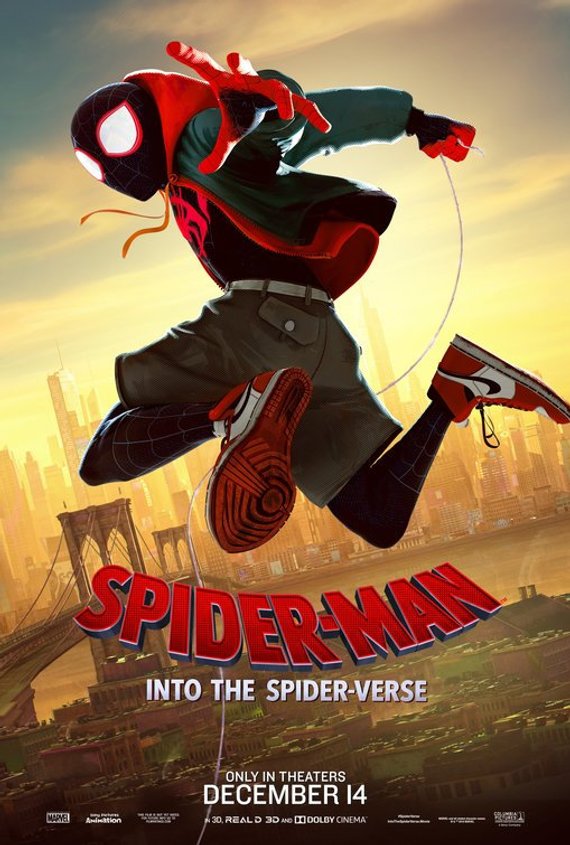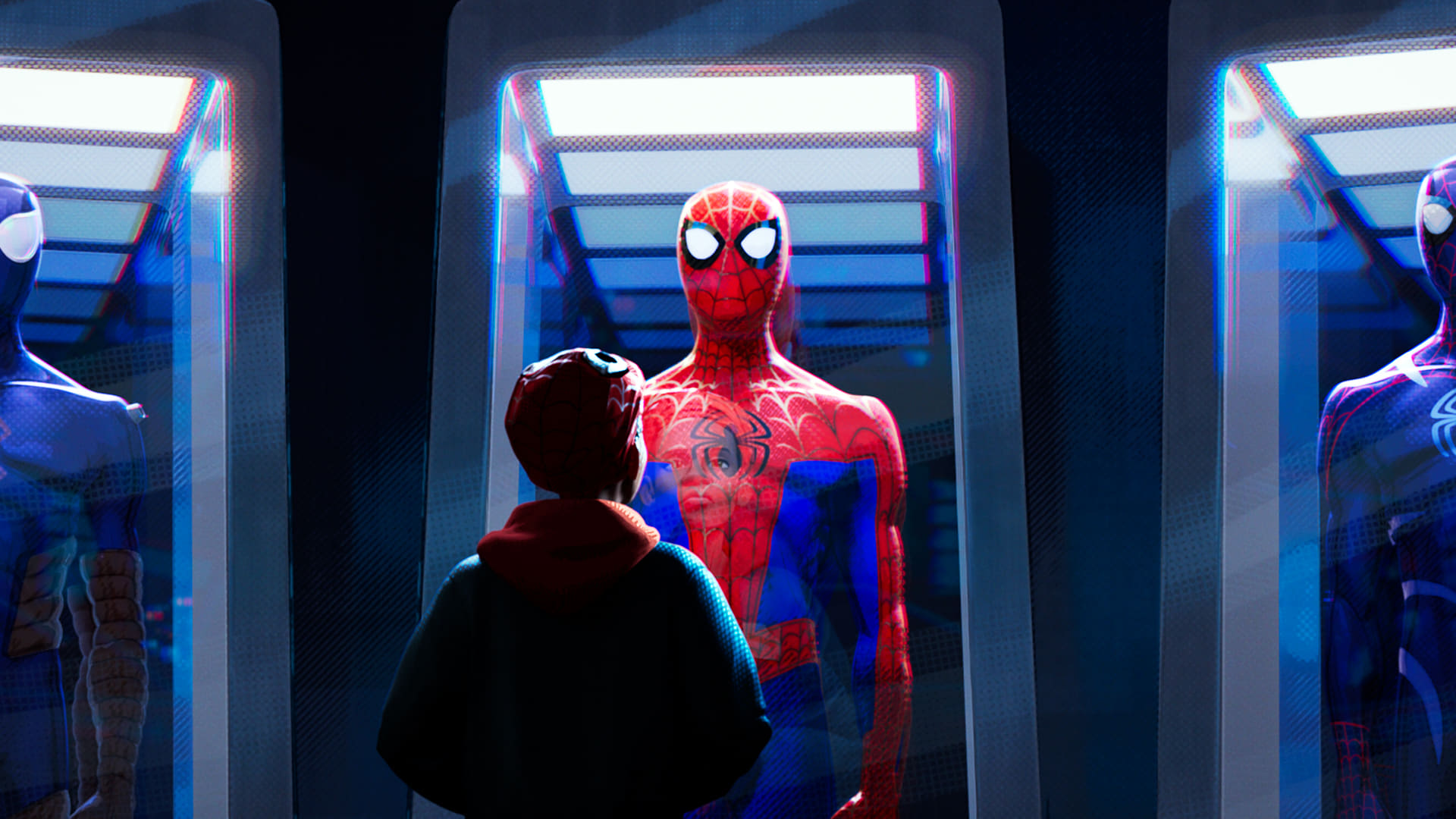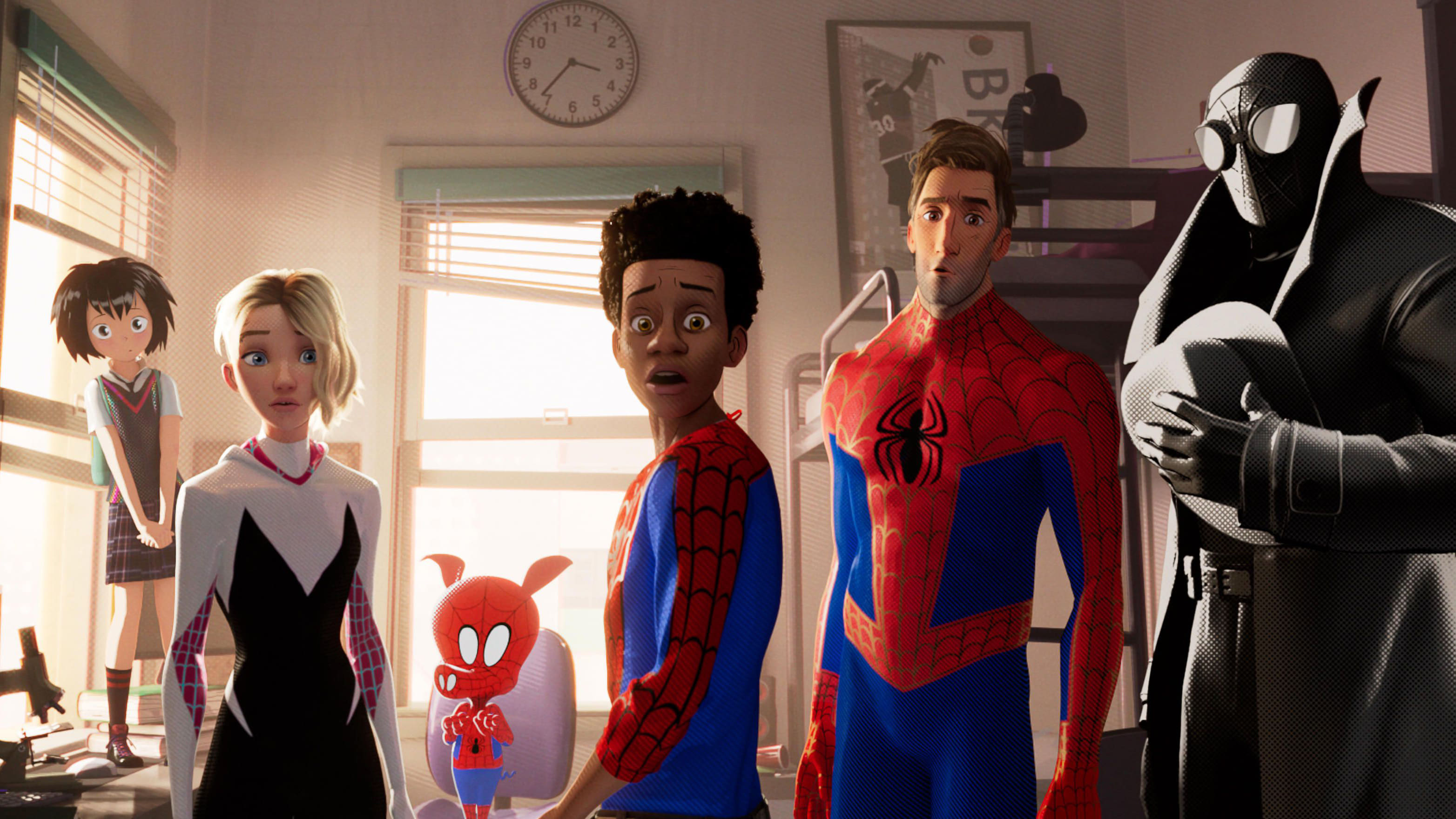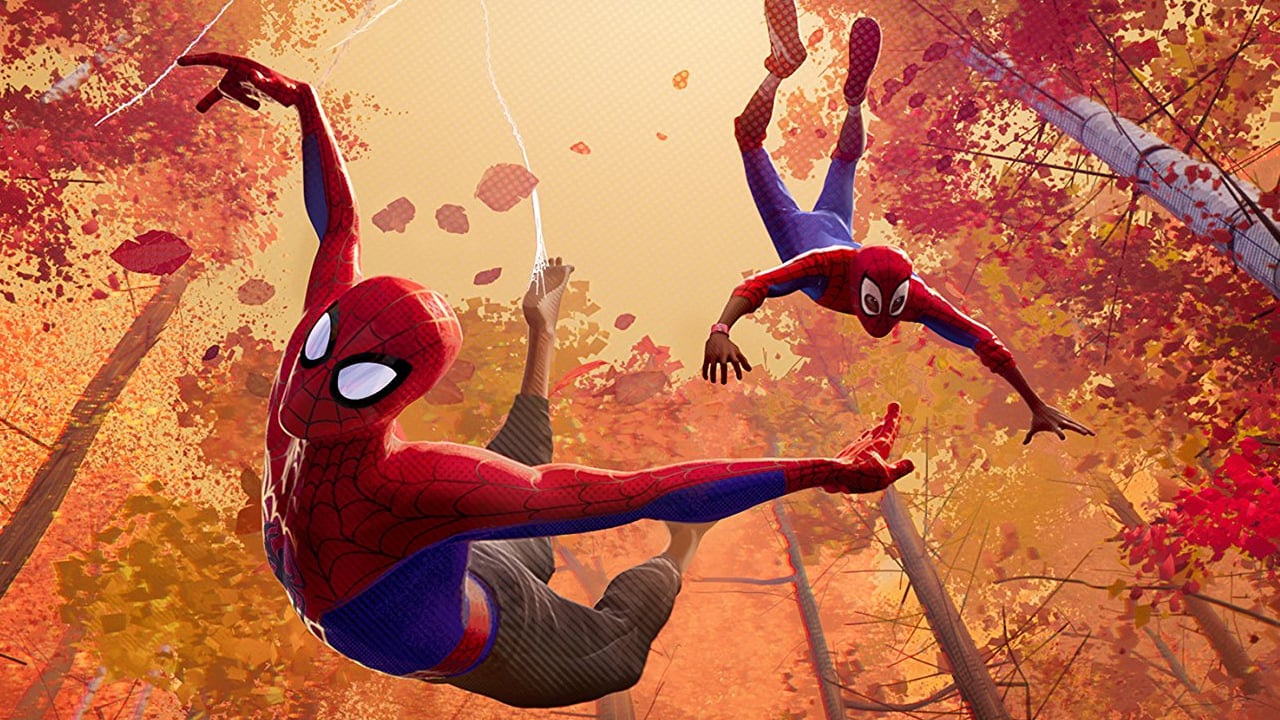Every Saturday this month, Tim will be taking a look at one of the films submitted for the Best Animated Feature Oscar.
 Fans of Marvel's iconic hero Spider-Man have had a packed 2018, between Tom Holland's third big-screen turn as the character in Avengers: Infinity War and Tom Hardy's role as the antihero Eddie Brock in the conspicuously Spider-Man-less Venom. But the best has very much been saved for last, in the form of Spider-Man: Into the Spider-Verse, a new animated feature that's easily the best Spider-Man movie since Spider-Man 2 (2004) back in the distant early days of the modern superhero movie boom.
Fans of Marvel's iconic hero Spider-Man have had a packed 2018, between Tom Holland's third big-screen turn as the character in Avengers: Infinity War and Tom Hardy's role as the antihero Eddie Brock in the conspicuously Spider-Man-less Venom. But the best has very much been saved for last, in the form of Spider-Man: Into the Spider-Verse, a new animated feature that's easily the best Spider-Man movie since Spider-Man 2 (2004) back in the distant early days of the modern superhero movie boom.
The film is the first big-screen adventure of Miles Morales (Shameik Moore), who first appeared in comic books in 2011 as a new Spider-Man following the temporary death of Peter Parker. He's a Brooklyn teenager, awkwardly fitting into life at an elite boarding school, living in perpetual chagrin at the overbearing authority of his cop dad (Brian Tyree Henry), and expressing himself through graffiti art (one of the things his dad is specifically overbearing about). And if that was all he ever was or did, Into the Spider-Verse would still put up a good argument for itself as a more than worthy movie...
As assembled by a writing-directing-producing brain trust of a good half-dozen people (including, most prominently, Phil Lord and Christopher Miller, of The Lego Movie and 21 Jump Street), Miles is a pretty terrific character, a teenager drawn with a virtually faultless combination of universality in his emotional life and extraordinary specificity in his biography as an Afro-Hispanic street artist uncomfortably thrust into the world of people from a wildly different economic class. Moore's vocal performance, full of small verbal nuances and emotional cadences that portray the character's constantly tense, miserable self-consciousness, rounds things out. He's just a great protagonist all around.

And of course, it is certainly not the case that he just goes about the business of being a wretched high school student.
Into the Spider-Verse is the most convoluted movie of any Spider-Man vehicle, drunk on the comic book logic of parallel universes, each with its own personal Spider-Man (or -Woman. Or -Pig). These universes are all mashed into contact with one another, and the plot involves separating them back out before all those other Spider-Individuals burst apart at the atomic level. And so the film largely takes the form of a sad-sack, pot-bellied middle-aged Peter Parker (Jake Johnson) from some other universe helping Miles learn to be a hero, with the aid of four other Spider folk. High among the script's achievements is that it manages to balance all of these characters and all of this sci-fi technobabble without ever feeling fan-servicey, or without losing sight of the centrality of Miles and his coming-of-age.

It's yet another superhero origin story, then, yet something about it feels more vital and fresh than any such film has in many years. Undoubtedly, this is partially because of the film's ruthless snarky meta-humor about the business of comic book movies, and of Spider-Man movies in particular. It's a terrifically funny movie, with jokes of every imaginable tone and genre (as long as it's family-friendly). But plenty of it has to do with the film's groundbreaking visual aesthetic, which pushes 3-D CGI animation into places it has never, ever been pushed. The film is a proper orgy of mixed media, using at least five distinct aesthetic styles to accentuate the differences between the heroes, from bright, flat cartoon coloring to anime-style roundness to painterly black-and-white. Even just in the "real" world Miles lives in, the film is a riotous experiment, artificially removing the smoothness from the character animation so everyone looks like they're moving at a jerky 12 frames-per-second, texturing every surface to appear like it's made of the tiny four-color dots of newsprint, and blurring out-of-focus layers of the image with red and blue halos.
It would be easy, and honestly accurate, to say that this looks like the pages of a comic book come to life. The film absolutely encourages that reading, with its indulgent use of frames and split-screens to mimic comic panels, and with floating text boxes representing Miles' inner monologue. But it also feels cheapening, somehow, to the grandeur of what the film has achieved in its visuals. It feels less like an attempt to simply copy a comic book aesthetic than to create some new, wholly cinematic analogue for comic books. The result is the best of all worlds. From comics, we get bright colors, dramatic poses, pure pulp dizziness in the storytelling. From movies, we get fluid movement, capturing the giddy sense of weightlessness of being Spider-Man, climbing buildings in defiance of gravity, swinging at reckless speeds, and all the rest.

So it's funny, and it's an aesthetic marvel. Still, what really sets this apart is how effectively heartfelt this is. We have here a film that effortlessly navigates the shift from self-aware sarcasm to cozy sentiment: for example, a running gag that shows the covers of all the Spider-Persons' first comic books goes from an in-joke to an absurdist attack on formulaic storytelling before finally ending on a triumphal moment so well-earned and heartwarming that I felt my eyes misting up. A lot of this is all on Miles, a character depicted with such love that it can't help but be moving to see him succeed and find his inner strength, no matter how many times this story has been told. More than any comic book movie in recent memory, Into the Spider-Verse understands the imaginative power of wanting to be a superhero, and watching Miles get to enact that process is the most rewarding, uplifting story the genre has told in years.